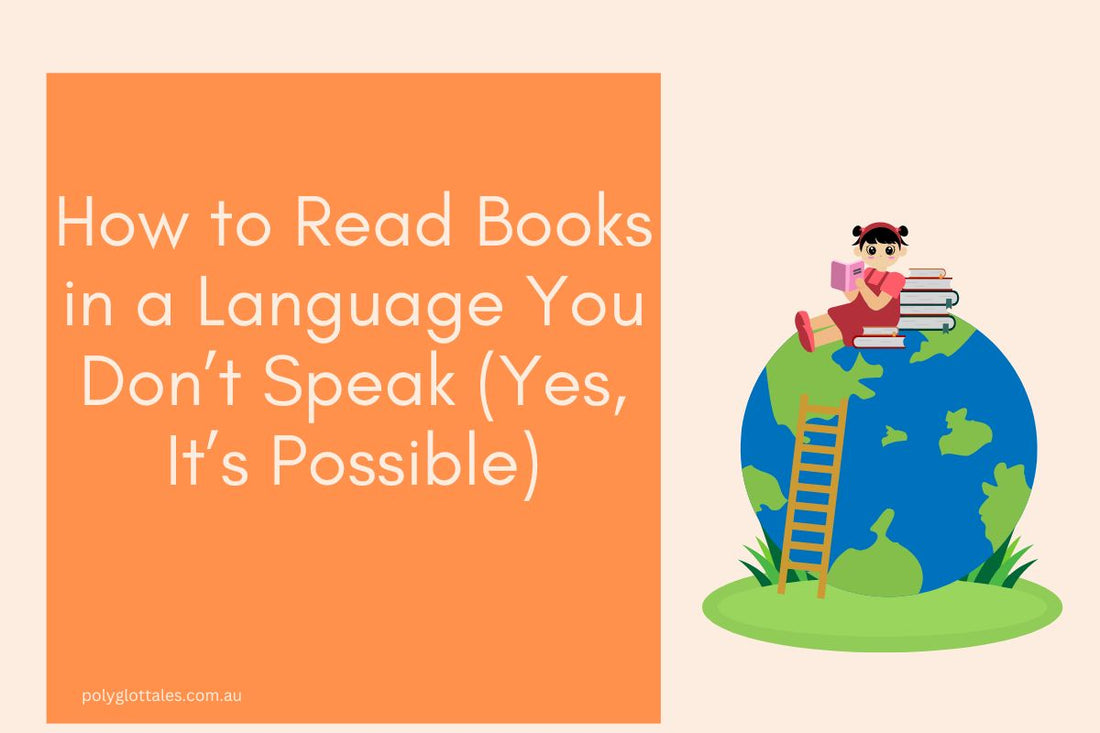Reading books aloud to your child is one of the most powerful ways to support their language development. But what if you don’t speak the language? Many Australian parents—especially those raising bilingual children—face this exact dilemma. Whether you're a monolingual parent supporting a heritage language or simply aiming to raise a global citizen, the good news is: you absolutely can read books in a language you don't speak.
At Polyglot Tales, your children's language books store in Australia, we see this challenge often. Here are practical, realistic, and motivating tips to help you make it work—even if you don’t know a single word yet.
1. Start with Picture Books That Have Audio Support
Look for books that come with audio narration. Some of our curated titles come with QR codes or online audio. You can listen and follow along, letting the audio do the pronunciation work while you support your child by pointing to the words or asking questions about the pictures.
Real-life tip: Make it a routine to listen to the audio together every evening. After a few repeats, you’ll naturally start picking up pronunciation and common phrases.
2. Use the Power of Pictures
You don’t need to translate every word. Use the illustrations to guide the story. Make up your own version in English based on what you see, and gradually introduce words from the target language. This builds curiosity and comfort around the language.
Realistic scenario: You might not know what “小狗” means in Chinese, but if there’s a picture of a puppy, you can point and say, "This is a puppy. In Chinese, it sounds like 'xiǎo gǒu.' Can we try saying it together?"
3. Label Words You Can Learn Together
Pick 3–5 words from each book to learn with your child. Write them down, stick them on the fridge, and practice them throughout the week.
4. Read in English First, Then Introduce the Target Language
If your book has both languages or if you have access to a translation, read it in English the first time. This helps your child (and you!) understand the story. Then, explore the same book in the target language to build familiarity and exposure.
5. Don’t Be Afraid of Mispronunciation
You don’t need to be perfect. Children learn from modeling effort and curiosity. If anything, your willingness to learn shows them that languages are fun, valuable, and worth exploring.
Insight: Children often correct adults when they start to learn pronunciation—and that’s a great sign they’re engaged!
6. Use Translation Tools Wisely
Apps like Google Translate or Papago can help you get the gist of a story. You can also scan pages to understand sentence structure or clarify confusing sections. A great feature in Google Translate is that when you scan the book, it not only provides the English translation but often includes pronunciation guides in the target language. This can help you feel more confident when reading aloud.
Reminder: This is about exposure, not perfection.
7. Join a Language Learning Routine
Make language time special. Saturday morning stories, bedtime bilingual books, or Sunday singalongs. Routine builds habit, and habit builds comfort. Plus, your child will associate positive emotions with the target language.
8. Lean on the Community
You’re not alone! Many Australian parents are on the same journey. Follow us on Instagram @polyglottales where we share pronunciation clips, vocabulary games, and language learning tips. Engage with our monthly language challenges to stay motivated.
Why This Matters
You don’t have to be fluent to give your child the gift of language. Whether you're nurturing a connection to culture or opening doors to global citizenship, the effort you make today shapes their future.
At Polyglot Tales, we believe in empowering every parent, regardless of their language level. That’s why we carefully select books that are both culturally rich and beginner-friendly—for the child and the grown-up reading with them.
Ready to try it? Browse our curated collection in Hindi, Japanese, Italian, Simplified and Traditional Chinese at Polyglot Tales, your children's language books store in Australia. Let’s turn the page together!

